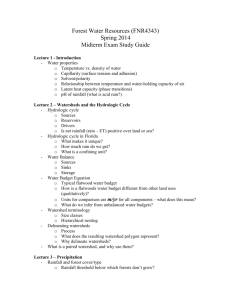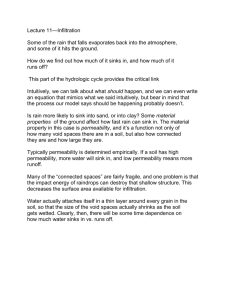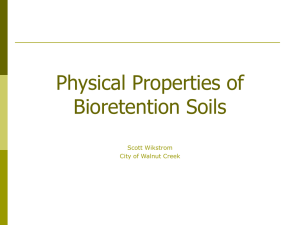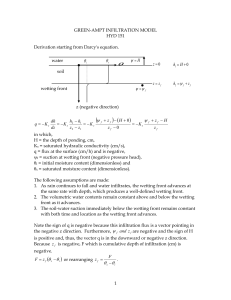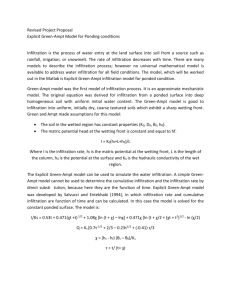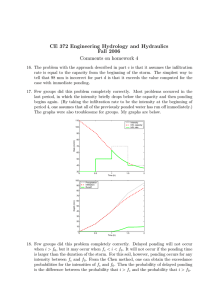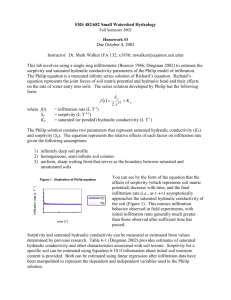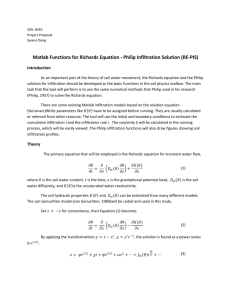Section7Slides
advertisement
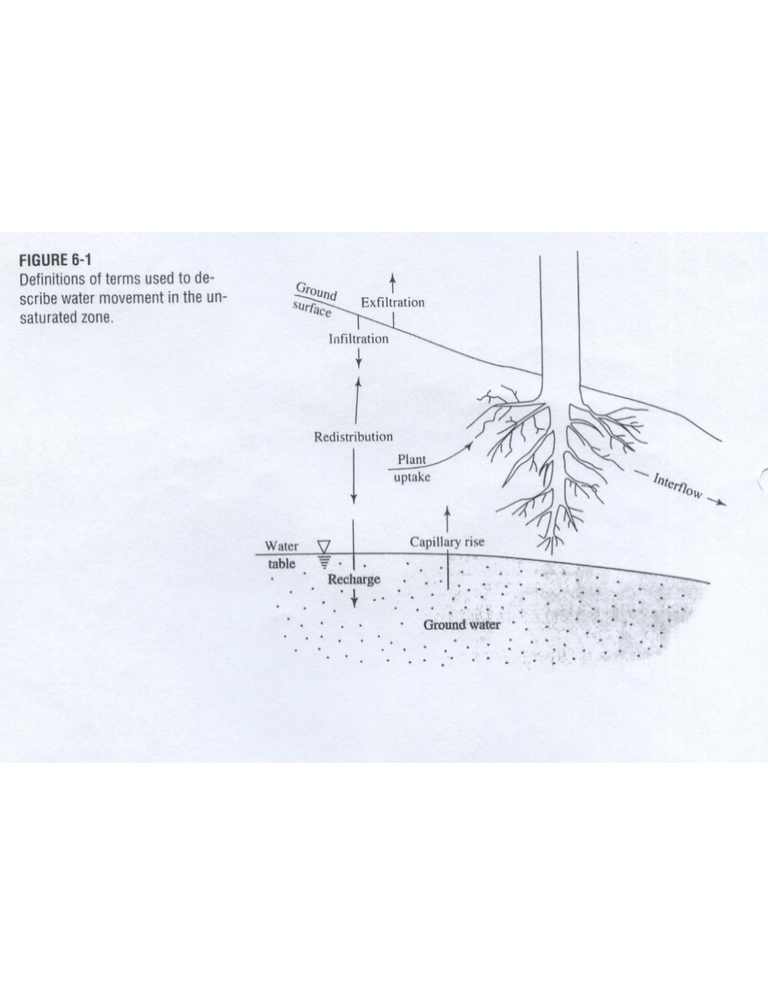
Figure 7.4.2 (p. 235) (a) Cross-section through an unsaturated porous medium; (b) Control volume for development of the continuity equation in an unsaturated porous medium (from Chow et al. (1988)). Porous media definitions [Note: Many are analogous to snow properties.] Soil matrix properties: particle density m m ass of m ineral grains Mm volum e of m ineral grains Vm ; typically m 2650 kg m bulk density b m ass of m ineral grains Mm volum e of soil Vs porosity n s volum e of voids volum e of soil V void 1 Vs Water content variables: (only relevant for unsaturated zone) volumetric water content volum e of w ater volum e of soil relative saturation s s ; 0 s 1 Vw Vs ; 0 s b m -3 [Note: Soil type/texture is used to identify soil hydraulic properties via tabulated relationships.] “Brooks-Corey” or “Clapp-Hornberger” Soil Hydraulic Parameters (based on soil type) porosity Sat. hydraulic conductivity (Ks) Sat. matric head (|ψs|) Table 7.4.1 (p. 241) Green-Ampt Infiltration Parameters for Various Soil Classes Figure 7.4.3 (p. 237) Moisture zones during infiltration (from Chow et al. (1988)). Figure 7.4.4 (p. 237) Moisture profile as a function of time for water added to the soil surface. Figure 7.4.5 (p. 238) Rainfall infiltration rate and cumulative infiltration. The rainfall hyetograph illustrates the rainfall pattern as a function of time. The cumulative infiltration at time t is Ft or F(t) and at time t + Δt is Ft + Δt or F(t + Δt) is computed using equation 7.4.15. The increase in cumulative infiltration from time t to t + Δt is Ft + Δt – Ft or F(t + Δt) – F(t) as shown in the figure. Rainfall excess is defined in Chapter 8 as that rainfall that is neither retained on the land surface nor infiltrated into the soil. Figure 7.4.6 (p. 238) Variables in the Green-Ampt infiltration model. The vertical axis is the distance from the soil surface, the horizontal axis is the moisture content of the soil (from Chow et al. (1988)). Figure 7.4.8 (p. 243) Ponding time. This figure illustrates the concept of ponding time for a constant intensity rainfall. Ponding time is the elapsed time between the time rainfall begins and the time water begins to pond on the soil surface. Modeling Actual Infiltration using the timecompression approximation (TCA) Actual infiltration model: P , t0 t t p f (t ) f c (t t c ) , t p t t r TCA condition #1: f c (t t c ) t t f c (t p t c ) P p TCA condition #2: t p tc 0 f c (t ) dt P t p Depending on the particular infiltration capacity model chosen (Philip or GreenAmpt), the two TCA conditions (equations) can be solved explicitly for the two unknowns (time to ponding and compression time) to get an explicit expression for the actual infiltration: f(t). See supplementary TCA notes for more details… From actual infiltration model, can compute cumulative infiltration and/or infiltration excess runoff: tp tr F f (t ) dt 0 tr Q P 0 tr P dt 0 f c (t t c ) dt tp tr f (t ) dt P tp f c (t t c ) dt P t r F

